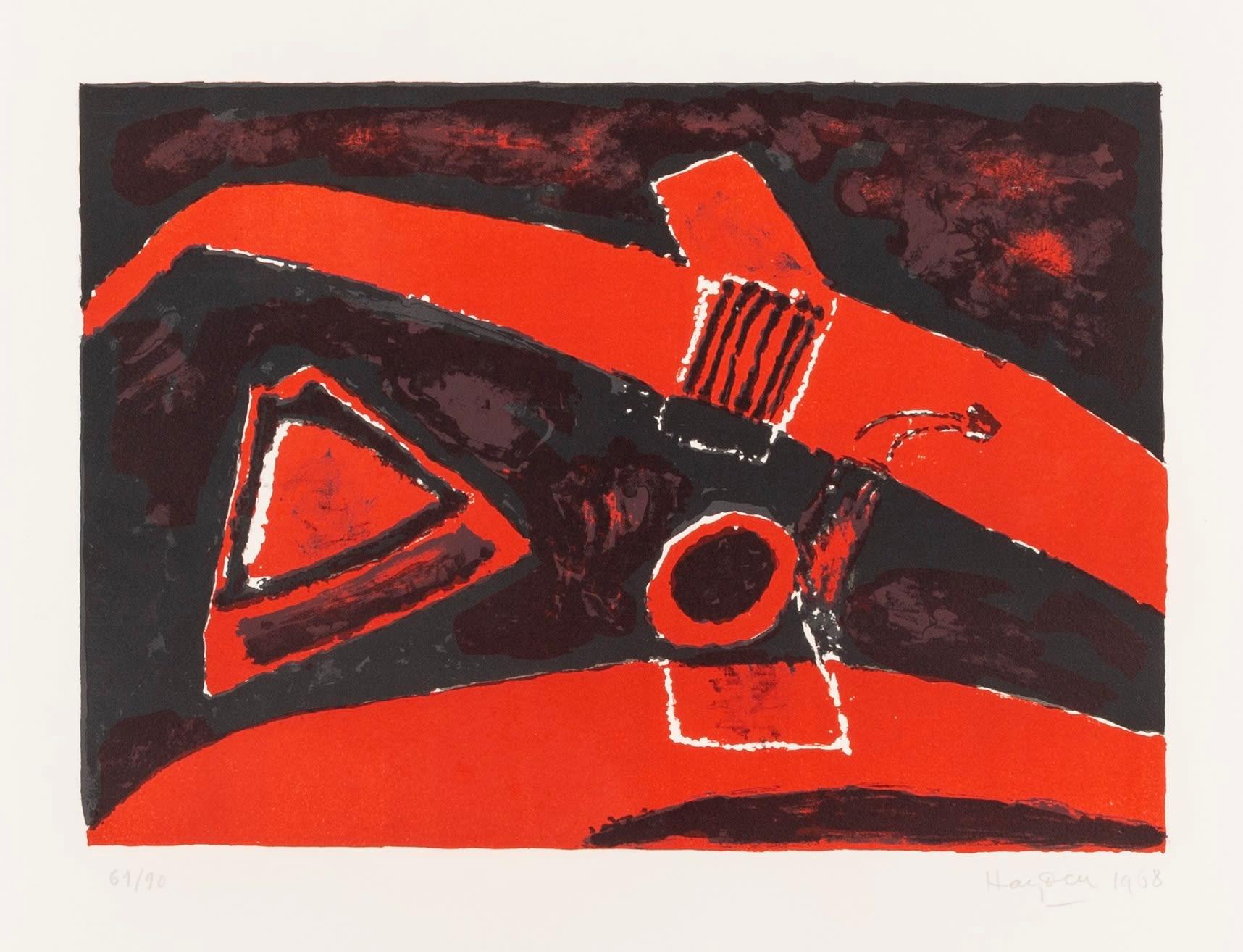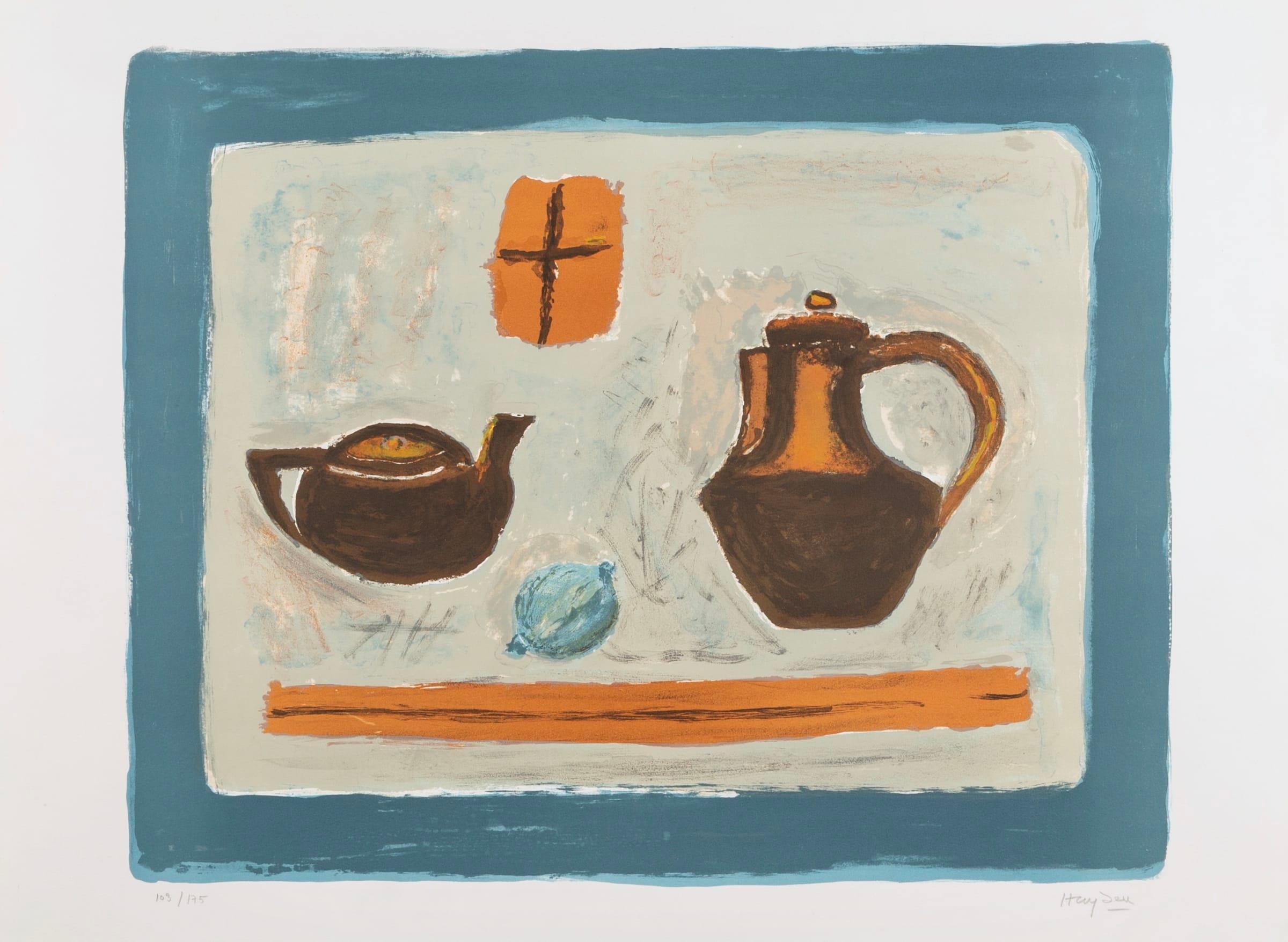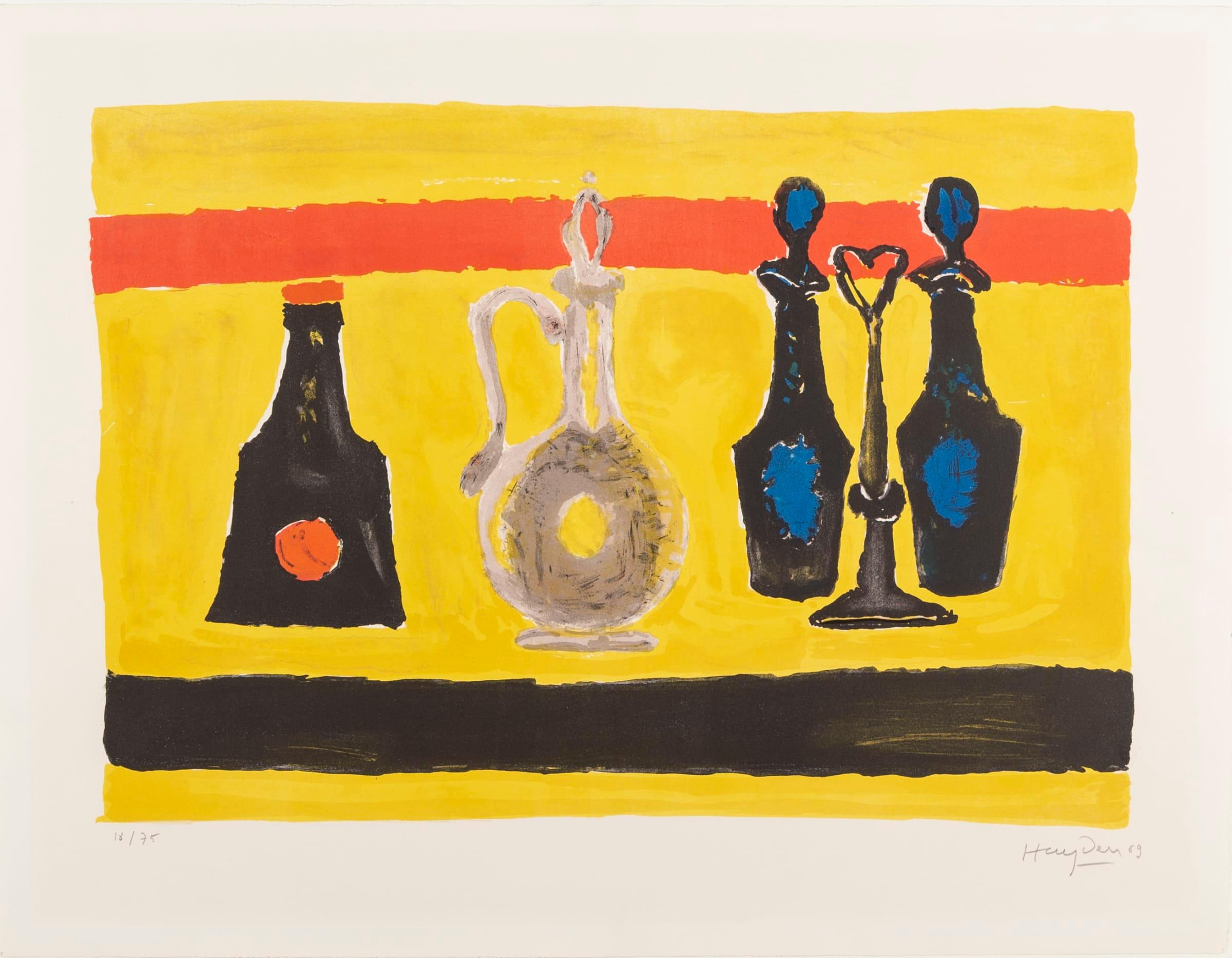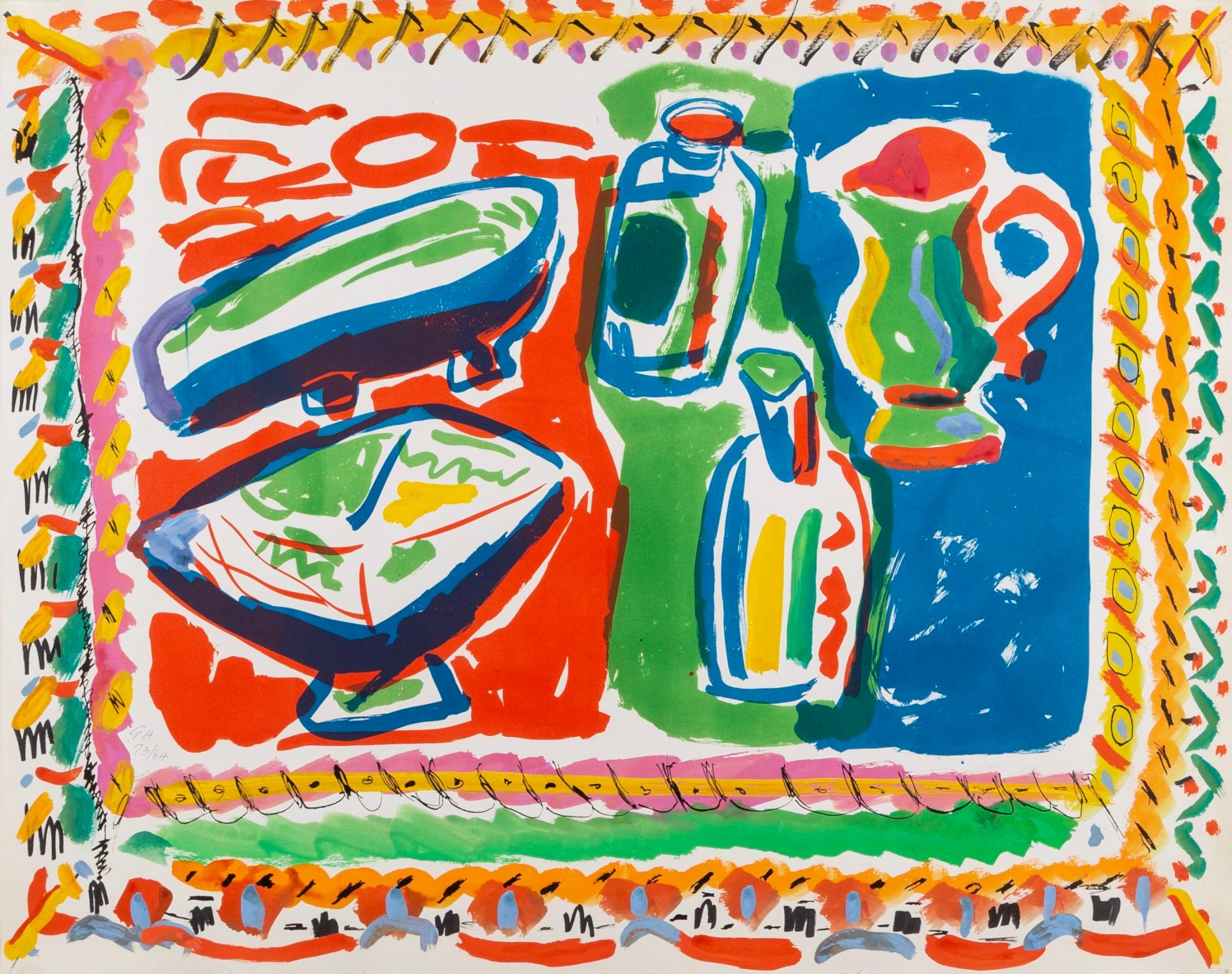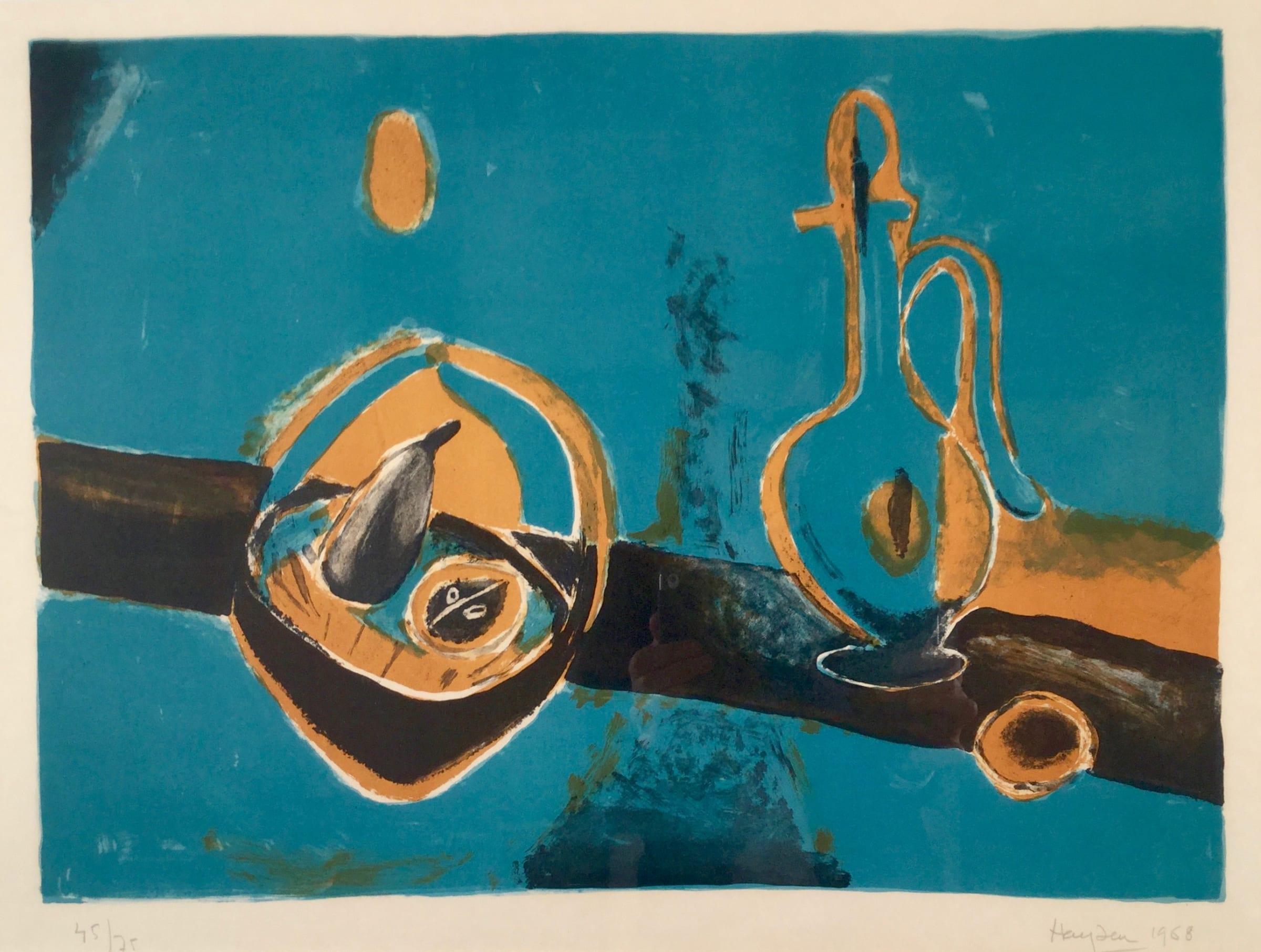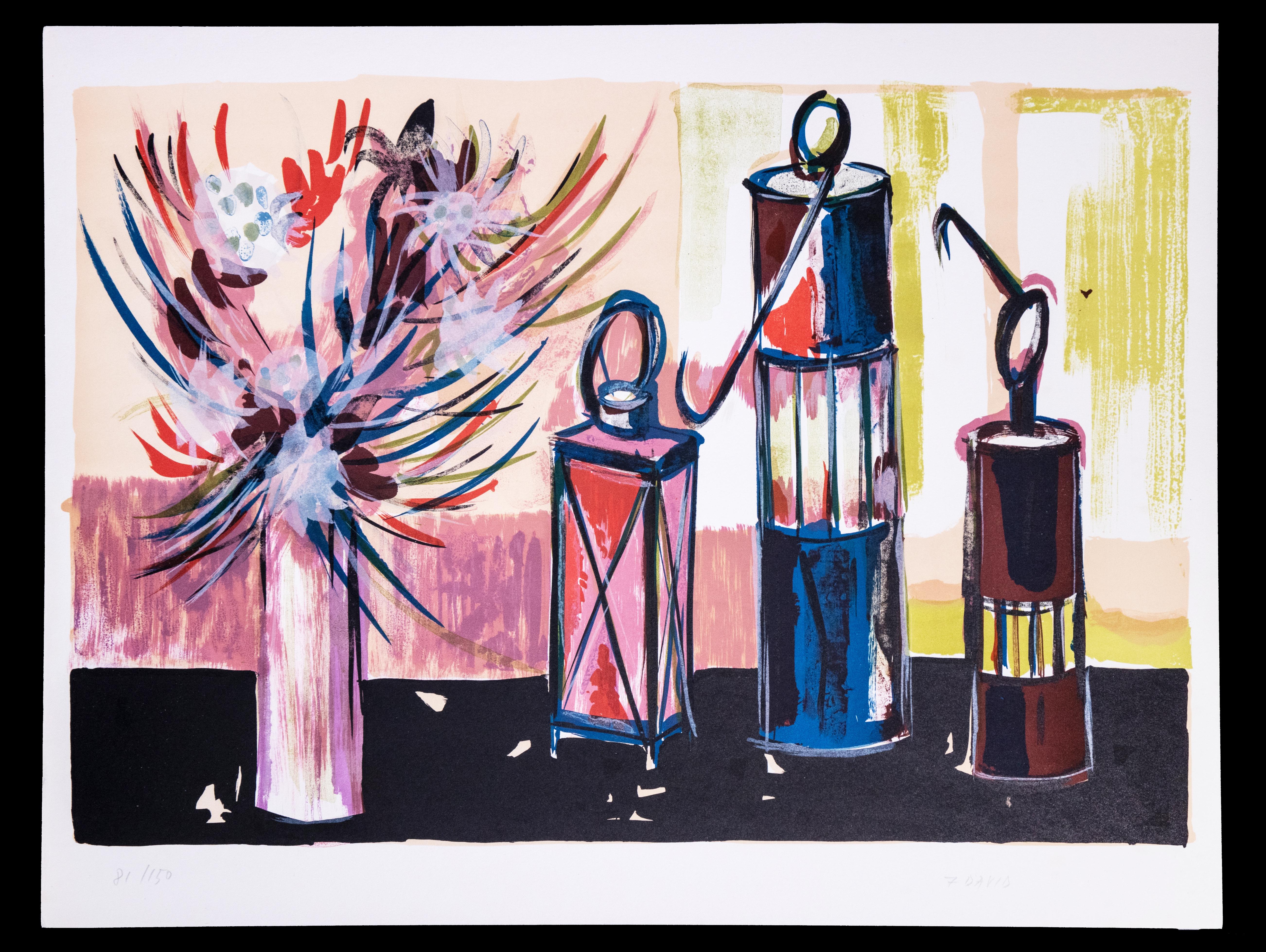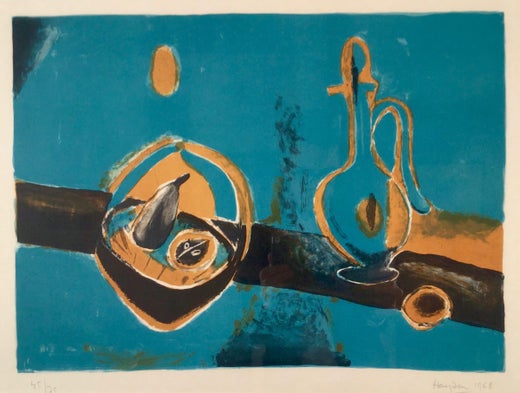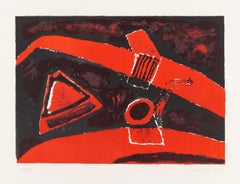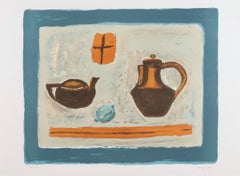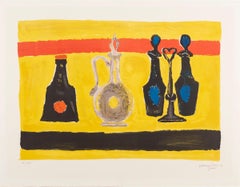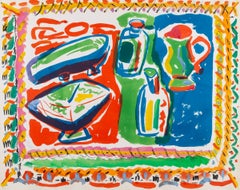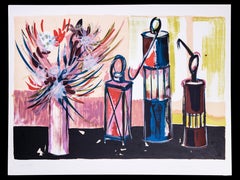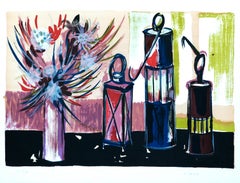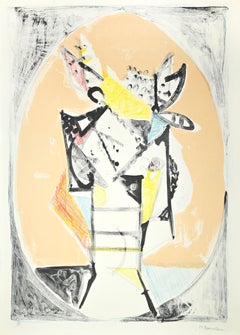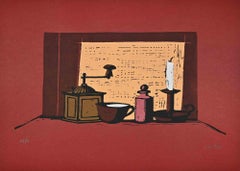Items Similar to La Lampe à pétrole (The Oil Lamp) by Henri Hayden, 1962
Want more images or videos?
Request additional images or videos from the seller
1 of 6
Henri HaydenLa Lampe à pétrole (The Oil Lamp) by Henri Hayden, 19621962
1962
$1,314.45
£950
€1,120.46
CA$1,818.68
A$1,973.36
CHF 1,046.83
MX$24,232.76
NOK 12,945.92
SEK 12,259.77
DKK 8,363.78
About the Item
La Lampe à pétrole (The Oil Lamp) by Henri Hayden, 1962
Additional information:
Medium: lithograph
38.5 x 56.5 cm
15 1/8 x 22 1/4 in
signed, dated and numbered 135/150 in pencil
Henri Hayden was a School of Paris painter, mainly of still life and landscape.
Hayden was born in Warsaw and studied engineering at Warsaw Polytechnic from 1902. Alongside this he studied painting at the Ecole des Beaux-Arts and, in 1905, decided to devote himself entirely to painting.
Hayden moved to Paris in 1907, then a hotbed for the European artists of his generation, and briefly studied at the art school La Palette. He travelled to Brittany most summers from 1909-18 to paint in its unique light, including Le Pouldu and Pont Aven. His first solo exhibition was at the Galerie Druet, Paris, in 1911. He was influenced by Cézanne, whose groundbreaking retrospective had been shown in the city the same year Hayden had arrived, and decided to join the Cubist movement (1915-21) where he became friends with the small circle including Braque, Gris, Lipchitz and Picasso. In 1916 the exclusive Cubist dealer, Leonce Rosenberg, brought Hayden under contract.
Becoming tired with the movement in 1922, Hayden reacted against Cubism and returned to the direct study of nature. He continued to exhibit in France, including a number of solo shows. During the German Occupation, Hayden took refuge in the South of France and, on returning to Paris in 1944, found his studio and much of his work destroyed by the Nazis.
Hayden bought a country house in 1962, near La Ferté-sous-Jouarre, and immersed himself in area, using its landscape views and places as the subjects for his paintings. For many years, Hayden was represented in London by Waddington Galleries. His works are in the collections of Musee d'Art Moderne, Paris; Petit Palais, Paris; Stockholm Museum; Budapest Musem; Barnes Foundation, Philadelphia.
- Creator:Henri Hayden (1883 - 1970, Polish)
- Creation Year:1962
- Dimensions:Height: 15.125 in (38.42 cm)Width: 22.25 in (56.52 cm)
- Medium:
- Period:
- Condition:
- Gallery Location:Kingsclere, GB
- Reference Number:1stDibs: LU2718214577742
Henri Hayden
Henri Hayden was a School of Paris painter, mainly of still life and landscape. Hayden was born in Warsaw and studied engineering at Warsaw Polytechnic from 1902. Alongside this he studied painting at the Ecole des Beaux-Arts and, in 1905, decided to devote himself entirely to painting. Hayden moved to Paris in 1907, then a hotbed for the European artists of his generation, and briefly studied at the art school La Palette. He travelled to Brittany most summers from 1909-18 to paint in its unique light, including Le Pouldu and Pont Aven. His first solo exhibition was at the Galerie Druet, Paris, in 1911. He was influenced by Cézanne, whose groundbreaking retrospective had been shown in the city the same year Hayden had arrived, and decided to join the Cubist movement (1915-21) where he became friends with the small circle including Braque, Gris, Lipchitz and Picasso. In 1916 the exclusive Cubist dealer, Leonce Rosenberg, brought Hayden under contract. Becoming tired with the movement in 1922, Hayden reacted against Cubism and returned to the direct study of nature. He continued to exhibit in France, including a number of solo shows. During the German Occupation, Hayden took refuge in the South of France and, on returning to Paris in 1944, found his studio and much of his work destroyed by the Nazis. Hayden bought a country house in 1962, near La Ferté-sous-Jouarre, and immersed himself in area, using its landscape views and places as the subjects for his paintings. For many years, Hayden was represented in London by Waddington Galleries. His works are in the collections of Musee d'Art Moderne, Paris; Petit Palais, Paris; Stockholm Museum; Budapest Musem; Barnes Foundation, Philadelphia.
About the Seller
No Reviews Yet
Vetted Professional Seller
Every seller passes strict standards for authenticity and reliability
Established in 2010
1stDibs seller since 2024
41 sales on 1stDibs
Typical response time: 4 hours
- ShippingRetrieving quote...Shipping from: Kingsclere, United Kingdom
- Return Policy
Authenticity Guarantee
In the unlikely event there’s an issue with an item’s authenticity, contact us within 1 year for a full refund. DetailsMoney-Back Guarantee
If your item is not as described, is damaged in transit, or does not arrive, contact us within 7 days for a full refund. Details24-Hour Cancellation
You have a 24-hour grace period in which to reconsider your purchase, with no questions asked.Vetted Professional Sellers
Our world-class sellers must adhere to strict standards for service and quality, maintaining the integrity of our listings.Price-Match Guarantee
If you find that a seller listed the same item for a lower price elsewhere, we’ll match it.Trusted Global Delivery
Our best-in-class carrier network provides specialized shipping options worldwide, including custom delivery.More From This Seller
View AllNature morte a la Pipe (Still life with a Pipe) by Henri Hayden, 1968
By Henri Hayden
Located in Kingsclere, GB
Nature morte a la Pipe (Still life with a Pipe) by Henri Hayden, 1968
Additional information:
Medium: lithograph
65.5 x 48.5 cm
25 3/4 x 19 1/8 in
signed, dated and numbered 61/90 ...
Category
20th Century Still-life Prints
Materials
Lithograph
Nature morte a la théière (Still life with a Teapot) by Henri Hayden, 1970
By Henri Hayden
Located in Kingsclere, GB
Nature morte a la théière (Still life with a Teapot) by Henri Hayden, 1970
Additional information:
Medium: lithograph
55.9 x 76.2 cm
22 x 30 in
signed and numbered 103/175 in pencil...
Category
20th Century Still-life Prints
Materials
Lithograph
Nature morte (Still life) by Henri Hayden, 1969
By Henri Hayden
Located in Kingsclere, GB
Nature morte (Still life) by Henri Hayden, 1969
Additional information:
Medium: lithograph
50.5 x 66 cm
19 7/8 x 26 in
signed, dated and numbered 18/75 in pencil
Henri Hayden was a...
Category
20th Century Still-life Prints
Materials
Lithograph
Still life with a Jug, by George Hooper 1989
By George Hooper
Located in Kingsclere, GB
Still life with a Jug, by George Hooper 1989
Additional information:
Medium: watercolour over screenprint
58 x 74 cm
22 7/8 x 29 1/8 in
signed with initials and numbered 73/84 in pe...
Category
20th Century Abstract Prints
Materials
Screen
Bouteille et fruits by Henri Hayden, 1968
By Henri Hayden
Located in Kingsclere, GB
Bouteille et fruits by Henri Hayden, 1968
Additional information:
Medium: lithograph in colours on wove
13 3/4 x 19 3/4 in
35 x 50 cm
signed, dated and numbered 45/75 in pencil
Hen...
Category
20th Century Still-life Prints
Materials
Lithograph
Still Life on a Table, Gouache Painting by Peter Potworowski, 1954
Located in Kingsclere, GB
Still Life on a Table, Gouache Painting by Peter Potworowski, 1954
Additional information:
Medium: Gouache
23.6 x 33.3 cm
9 1/4 x 13 1/8 in
Tadeusz Piotr (Peter) Potworowski was a Polish abstract and figurative painter who lived and exhibited in Paris, Poland, Sweden and England.
Potworowski was born in Warsaw in 1898. After serving in the First World War, Potworowski enrolled at the Warsaw University of Technology to study architecture, though his studies were halted by the Bolshevik campaign. After the end of the Polish-Soviet War in 1921, Potworowski returned to Warsaw and began to study art at the school of Konrad Krzyżanowski. By the following year, he had taken a place at the Academy of Fine Arts in Krakow, where he studied under Józef Pankiewicz. It was Pankiewicz who incorporated Potworowski into the Paris Commute, or Kapists, a group of Polish artists who travelled to the French capital in 1924.
During his seven years in Paris he became personally acquainted with Pablo Picasso, Pierre Bonnard, Jean Cocteau, Constantin Brancusi and attended for a short time Fernand Léger's studio. It was through this job that he met his first wife Magdalena Mańkowska, a student of anthropology in Paris. After marrying in France, and visiting Britain in 1928, the couple returned to Poland in 1930, where their first son John was born.
In 1931, Warsaw was the locale of the first Kapists exhibition, entitled New Generation, which took place at the Artist's Club, Hotel Polonia, and the Institute of Art Propaganda. Here, Potworowski received a prize for his painting Three Women in the Interior. The following year, he held his first solo exhibition at the Makowski Salon in Poznań. This success was sustained through 1937 when the artist received a silver medal at the International Exhibition of Art and Technology in Paris, as well as the award from the Minister of Foreign Affairs. After this strong development, Potworowski had a travelling solo exhibition arranged, held in 1938 at the Institute of Propaganda of Art in Warsaw and then in Lviv.
Following the invasion of Poland in 1939, Potworowski escaped to Sweden via Lithuania. It was from here that the artist, with his wife and two young children, made his way to Britain, arriving in 1943. After serving in Scotland, Potworowski settled in London, and in January 1946, an exhibition of 33 of his works was held at the Redfern Gallery. This was followed by regular exhibitions with the Redfern, Gimpel Fils (1948 onwards) and The London Group, to which he was elected a member in 1949. He was also the president of the Association of Polish Artists and published regularly in the monthly magazine "Nowa Polska".
Potworowski's teaching career included eight years as Professor of Painting at the Bath Academy of Art, Corsham (1949-57), where he had considerable European influence, specifically on abstraction, and was acknowledged by contemporaries including Peter Lanyon, Bryan Wynter...
Category
20th Century Abstract Paintings
Materials
Gouache
You May Also Like
Vases and Candles - Original Lithograph 1970s
By Flor David
Located in Roma, IT
Hand Signed.
Edition of 150 prints.
Category
1970s Contemporary Still-life Prints
Materials
Lithograph
Vases and Candles - Lithograph 1970s
By Flor David
Located in Roma, IT
Hand Signed.
Edition of 150 prints.
Category
1970s Contemporary Still-life Prints
Materials
Lithograph
Still Life with Vase - Lithograph by Mario Francesconi - 1970s
Located in Roma, IT
Still Life with Vase of Flowers is a print realized by Mario Francesconi in the 1970s.
Lithograph on paper.
Hand-signed and numbered, edition 33/80 prints.
Good conditions.
The a...
Category
1970s Abstract More Art
Materials
Paper, Lithograph
Still Life - Etching by Enotrio Pugliese - 1970s
Located in Roma, IT
Still Life is an Etching realized by Enotrio Pugliese in 1970s.
Hand-signed by the artist on the lower.
Numbered, Limited edition of 60 prints.
Good conditions.
Enotrio Pugliese ...
Category
1970s Contemporary Figurative Prints
Materials
Etching
$440 Sale Price
20% Off
Hose Lamp, Modern Lithograph by Jim Dine
By Jim Dine
Located in Long Island City, NY
An abstract composition of several long black lines that end with a bright yellow bulb. In the upper right is a more detailed view of one of the bulbs. This lithograph is signed in p...
Category
1960s Abstract Prints
Materials
Lithograph
Vessels by Yosl Bergner - Still life painting, 1965
By Yosl Bergner
Located in London, GB
*PLEASE NOTE UK BUYERS WILL ONLY PAY 5% VAT ON THIS PURCHASE.
Vessels by Yosl Bergner (1920-2017)
Oil on canvas
65 x 81.4 cm (25 ⁵/₈ x 32 inches)
Signed and dated upper left
Execute...
Category
1960s Modern Still-life Paintings
Materials
Canvas, Oil
More Ways To Browse
Kazutoshi Sugiura
Month Flower Prints
Ohno Bakufu
Peter Max Marilyn
Shodo Kawarazaki
Shok 1
Walled Off Hotel Box Set
Warhol Flowers Blue
Wayne Thiebaud Lithograph
Wayne Thiebaud Pie
Wolfgang Stiller
Andy Warhol Committee 2000
Andy Warhol Flowers 1964
Andy Warhol Grapes
Brandon Osorio
Brennie Brackett
Chiquita Sign
Committee 2000
